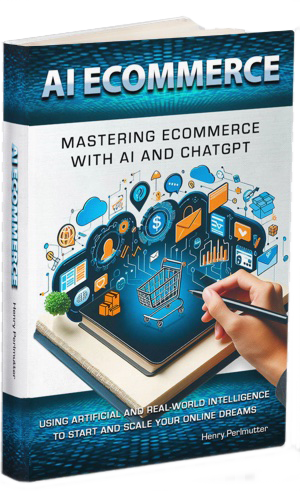From Browsing to Buying: How AI Is Shaping Every Step of the Customer Journey
The modern customer journey is no longer a straight line. It’s a dynamic, personalized experience shaped by hundreds of micro-moments across platforms, devices and touchpoints. At the center of this evolution is artificial intelligence.
Henry Perlmutter
4/4/20253 min read
From Browsing to Buying:
How AI Is Shaping Every Step of the Customer Journey
The modern customer journey is no longer a straight line. It’s a dynamic, personalized experience shaped by hundreds of micro-moments across platforms, devices and touchpoints. At the center of this evolution is artificial intelligence.
AI isn’t just one tool in the ecommerce toolkit—it’s becoming the invisible operating system behind the entire customer lifecycle. From the first impression to the final follow-up, AI is transforming how brands attract, convert and retain their customers.
In this deep dive, we’ll break down how AI shapes each phase of the customer journey and why brands that embrace this shift are pulling ahead of the competition.
1. Awareness: Smarter Targeting, Better Discovery
The journey begins long before a customer lands on your site. AI is revolutionizing how people discover products and how brands get discovered.
Key AI Applications in Awareness:
Predictive Audience Modeling: AI analyzes behavioral patterns to identify likely buyers before they even start searching.
Lookalike Audiences & Persona Cloning: Machine learning helps create high-probability audiences based on existing customer profiles.
Creative Optimization: Generative AI tools now create and test ad visuals, headlines and messaging variations in real time.
Result: Ads are more relevant, cost-per-click drops and customer acquisition becomes more efficient.
2. Consideration: AI-Powered Content and Engagement
Once a customer is intrigued, the consideration phase begins—and this is where AI flexes its creative and contextual muscles.
Key AI Applications in Consideration:
Dynamic Product Recommendations: Algorithms suggest products based on browsing history, user behavior, affinities and even real-time session data.
Personalized Content Blocks: AI customizes homepages, category layouts and banners per visitor.
AI Copywriting & Visuals: Product descriptions, feature highlights and promotional banners are increasingly generated or optimized by AI tools like Jasper, Copy.ai and Midjourney.
🛒 Result: Customers feel seen and understood, which leads to longer session times and more product views.
3. Conversion: AI as the Real-Time Sales Assistant
This is where AI shifts from guiding to closing.
Key AI Applications in Conversion:
Conversational Commerce: Chatbots and AI assistants answer questions, suggest products and even handle transactions—all in real time.
Intelligent Offers & Dynamic Pricing: AI adjusts pricing or presents timely discounts based on demand signals, cart activity or customer lifetime value.
A/B Testing at Machine Speed: Multivariate tests that once took weeks can now be run in hours with AI determining which CTA, layout or image is driving the most conversions.
Result: Fewer abandoned carts, more confident purchases and faster paths to checkout.
4. Fulfillment: The AI-Powered Backend
The experience doesn’t end at checkout. AI plays a vital role in delivering on the brand promise.
Key AI Applications in Fulfillment:
Order Routing & Logistics Optimization: AI determines the fastest, cheapest or most eco-friendly way to ship.
Inventory Forecasting: Machine learning predicts what SKUs to restock, reduce or discontinue—helping avoid out-of-stock and overstock issues.
Proactive Issue Resolution: AI detects fulfillment delays or anomalies and notifies the customer (or resolves it autonomously).
Result: Faster delivery, fewer mistakes and smoother operations behind the scenes.
5. Retention: Building Loyalty with Intelligence
Brands spend so much to acquire customers—retention is where AI earns its keep.
Key AI Applications in Retention:
Predictive Churn Modeling: AI spots signals that a customer may drop off and triggers win-back campaigns before they’re gone.
Personalized Loyalty Programs: Instead of one-size-fits-all rewards, AI tailors offers based on spend, behavior and preferences.
Post-Purchase Journeys: Smart flows engage users with relevant product tips, upsells, reviews requests or referral prompts.
Result: Longer customer lifetime value, stronger brand affinity and more referrals.
Final Thoughts: AI Is the New Customer Journey Architect
The old funnel is gone. In its place is a constantly adapting, AI-powered ecosystem that responds to each customer in real time.
Brands that adopt AI aren’t just getting better results—they’re creating customer experiences that feel effortless, personal and intuitive. This isn’t just good UX. It’s good business.
Whether you're a founder, CMO or ecommerce operator, the message is clear: the journey from browsing to buying is no longer human-led. It's co-created by humans and machines—and it's just getting started.
---








